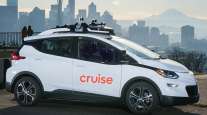Staff Reporter
Real-World Testing of Autonomous Trucks Ramps Up
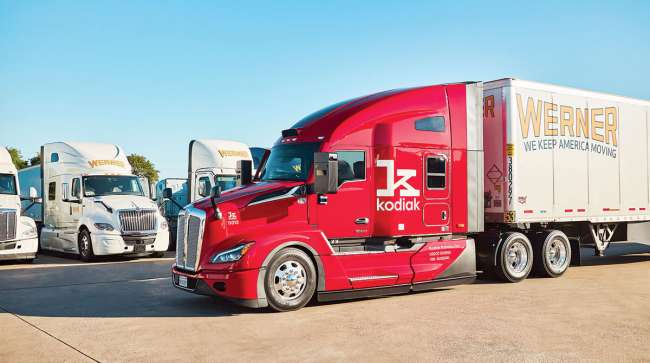
[Stay on top of transportation news: Get TTNews in your inbox.]
Over the past year, the autonomous trucking sector has accelerated efforts to test its technology in real-world applications. Through its partnerships, Kodiak Robotics is now hauling freight commercially across the southern region of the country, including with Ikea Supply Chain Operations, which started a pilot program in October. For-hire carriers such as U.S. Xpress and Werner have also announced partnerships with Kodiak as they move into the sector.
“We’ve been operating commercially for undisclosed partners going all the way back to 2019,” said Kodiak CEO Don Burnette. “We’ve significantly ramped up that initiative in 2022.”
Autonomous solutions firm Waymo Via launched a long-term strategic alliance with J.B. Hunt Transport Services on Jan. 14. This came less than a year after the two companies partnered on a limited pilot. The focus centers on gaining insights for further technology development. Waymo Via also has a strategic partnership with C.H. Robinson.

Burnette
Brad Neuman, trucking motion planning lead at Waymo, said forming these alliances are vital to advance the technology. “If you just do nothing but haul around your own test loads, you don’t learn about customer operations, you don’t learn about requirements,” he said. “It’s really important to engage with customers.”
Lee White, vice president of strategy at TuSimple, explained the company has shifted testing and development focus from the foundational capabilities of autonomous trucking to real lanes and applications.
“That’s where we’re investing, that’s where we’re moving our trucks,” he said. “That’s where we’re running our testing missions every night. It’s building toward commercial operations.”
Walter Grigg, program manager of corporate strategy at Torc Robotics, noted that autonomous trucking technology is still well within its research and development phase. He noted the goal of this phase is to get to a scalable, commercially viable and inherently safe product, yet the industry is currently very broad.
“Depending on the industry, relatively small test fleets are being deployed today operating and supporting the R&D effort, most of which are operating in relatively localized environments,” Grigg said. “Most small fleets driving today are still in testing conditions to gather the knowledge/information necessary to operationalize the technology when the time comes.”
Grigg added the pilot operations also tackle the challenges of working within the freight and supply chain industry. He noted that the data collection typically consists of the identification of edge cases and the logistics beyond the capabilities of autonomous trucks such as weigh stations, interaction with law enforcement, fueling and calibration.
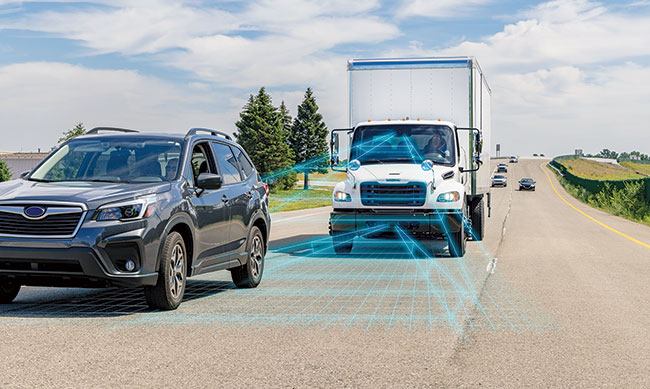
More autonomous trucks have been testing in real-world situations. (Daimler Truck North America)
“Three things need to happen in order for autonomous trucking technology to be on the road,” Grigg said. “[The solutions must be] inherently safe, commercially scalable and economically viable for the trucking industry. Each of these pillars needs to be achieved, full stop.”
Plus co-founder Shawn Kerrigan sees an innovative data-centric approach that covers billions of miles of real-world experience, simulation testing and third-party validation as necessary.
“The last few years, the industry was dominated by news of autonomous trucking trial projects and demos,” Kerrigan said. “It’s a vastly different market today. Given the tight financial markets, demos and proofs of concept are simply not enough. Investors for publicly traded and private companies want tangible products and a near-term path to commercialization.”
Plus has been focused on highly automated driving. This process looks to augment the driving function to make it safer, more fuel efficient and less stressful for drivers instead of replacing them. Kerrigan believes this type of technology will have the highest growth potential in the coming years.
“This has been our commercialization strategy all along: Packaging our autonomous driving technology into a commercial product that delivers to customers today,” Kerrigan said.
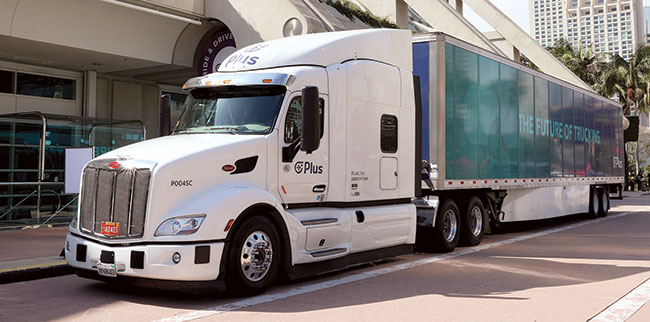
A Plus truck at an industry show. (John Sommers II for Transport Topics)
Kodiak’s Burnette said the strides made in autonomous technology are an accomplishment to note.
“I’ve been working on this for almost 15 years now, and I’ve seen an incredible evolution of the capabilities of the system, of the architectures that we use,” he explained. “The lessons that we’ve learned along the way to produce what is now a very early vetted safety framework around the capabilities of self-driving.”
Burnette added the systems are capable of handling just about everything that the highway throws at it — including basic operations such as lane keeping and lane changes as well as more complex tasks such as reacting to construction zones and weather.
“You need to have safety monitoring and safety features built in to the system,” he said. “We have a safety framework and an embedded safety computer that’s monitoring over a thousand diagnostics within the truck.”
TuSimple’s White believes the industry is at the point where it is vital to test autonomous technology in the real world with capable driver-out lanes for freight, customers and scenarios.
“[We want to learn] how are you actually going to operationalize autonomous trucking Monday through Friday, day after day,” he explained. “Not just test it, but really put it into your operation. That’s where our focus is over the next year.”
Apex.AI CEO Jan Becker said he sees innovation slowing down. He explained that there’s a growing focus of “corner cases,” — environmental variables that occur outside normal operating parameters. It’s a critical process for the development of autonomous technology to ensure safety, and why pilot programs that move real freight are so critical.
“Autonomous driving innovation follows an S-curve. In the beginning you have development where it’s very flat. Once you understand what you need to do, then you enter a phase in which you make a lot of progress. That was the case for autonomous driving probably three or four years ago. Now, we are in the phase, you also see this in the hype cycles, where we are in the very final steps of making applications robust and reliable. Then progress always slows down,” he said. “We are now seeing companies solve all those corner cases. They’re just so many of them because traffic is complex. It takes a lot of time.”
Burnette pointed out that it also depends on the type of environment. Highway driving is more conducive to autonomous driving compared with dense urban environments because of a lack of random events.
“The highway is a much more structured environment,” he added. “Of course, anything can go wrong on the highway. Everything is statistical. It’s really about how often do surprises happen and when you’re driving in and around cities, surprises happen a lot more frequently.”
Becker noted that humans learn to infer situations and can react appropriately. Seeing a ball roll out into the street means there could be a child running after it. But computer systems need to have programming to react effectively.
“Those are all the corner cases that you have to teach and learn for the autonomous system,” he said. “Since there’s an infinite number, you are essentially never done. But you have to teach the system some intelligence to be able to figure out things on their own. And then over time, the operational range of trucks, or autonomous vehicle in general, can be expanded.”
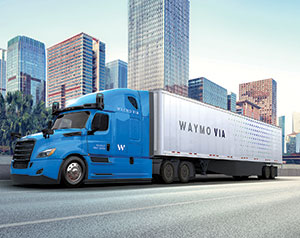
Waymo Via and Daimler work together on autonomous trucking. (Waymo)
Most autonomous trucking systems have someone behind the wheel to document progress, take over driving when necessary and perform duties such as attaching trailers. But oftentimes they drive the vehicle as a way of teaching the autonomous system how a professional driver operates a truck through machine learning processes, for example, applying braking and steering techniques.
“We’re working with Daimler to develop a system that will meet those requirements,” Neuman said. “One of the most active areas of work right now being currently developed is putting our existing, with some upgrades, sensors and computers and all of that onto the Daimler platform, which requires integration all throughout.”
Neuman added that on the software side there is a number of next-generation technologies being investigated. He noted increasingly large data sets and high-capacity machine learning models are being used to improve the driving performance of the system.
White noted that his focus has been on how the technology can be operationalized. That means figuring out how to set up good deployment plans as well as making the technology scalable for customers. It also means helping fleets and shippers utilize autonomy to make life better for their drivers.
“You’re constantly improving the product and the features,” he said. “Our focus is on the commercialization. There’s nothing more for us to do foundational capabilities-wise. It really [is] the operational application of the future and the lanes, the real-world applications, real freight and real lanes, that we focused our testing and [development] on.”
Want more news? Listen to today's daily briefing below or go here for more info:



